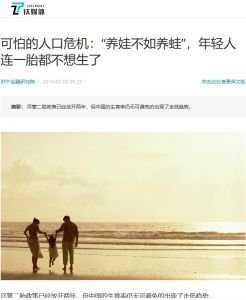
Article
Beyond the Two-Child Policy
Looming Population Crisis in China, the Underlying Cause and Alternative Measures that Could Be Taken
TMTPost,
2018
Read or listen offline
Amazon Kindle
auto-generated audio
1×
Log in to listen to the audio summary.
auto-generated audio
Recommendation
For 35 years, China enforced a one-child policy intended to limit the country’s surging population. By 2000, the policy had created a demographic crisis: an aging population with a substantial gender imbalance. The government abolished the policy in 2016 – replacing it with a two-child policy – but the birth rate has continued to drop. Suning Financial Research Institute’s brief report outlines the causes and potential consequences of nearly 40 years of population engineering in China. getAbstract recommends this article to anyone interested in the broad trends in China’s population and economy.
Summary
About the Author
Suning Financial Research Institute is a large-scale professional research institute within the Suning Financial Services Group.


















Comment on this summary